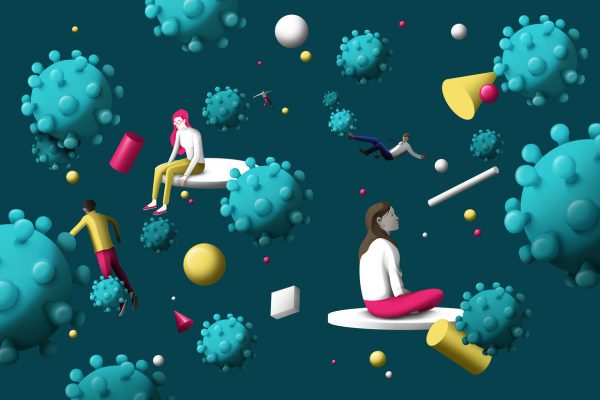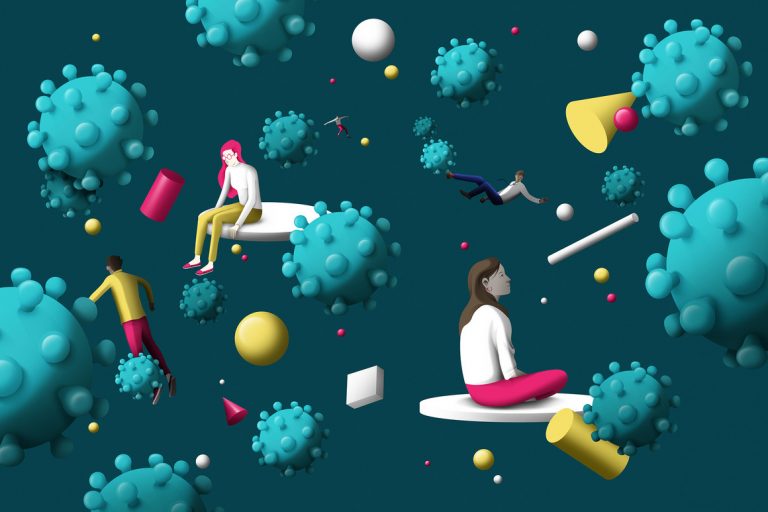

The COVID-19 pandemic and the subsequent lockdown has exposed how unprepared and vulnerable nations are across the world. While the novel Coronavirus is a riveting topic of study for virologists, microbiologists and public health practitioners, it is an equally important topic of study for sociologists. The ways and means through which societies tackle pandemics, including medical knowledge and technology, are mediated by social processes and institutions. The pandemic is therefore as much a social issue as it is scientific.
The Indian Cultural Forum spoke to Purendra Prasad, who teaches sociology at the University of Hyderabad, about the social aspects of the coronavirus pandemic. He said “from robbing the poor of their livelihood to the commercialisation of personal protection equipment, the invisible face of coronavirus has been multifaceted.” Emphasising on the importance of the sociological understanding of the current pandemic he further stated, “there was no doubt for a need to devise an effective policy to scale up the emergency response mechanisms in tackling not just an epidemic like the current coronavirus pandemic, but also its subsequent effects on society. However, to do this, we first need to start by analysing the various social dimensions of the pandemic. For this will obligate the governments to take steps to go beyond survival and ensure dignified living for all.”
Explaining social-psychological processes during an epidemic in his paper, Epidemic Psychology ; A Model, sociologist Philip Strong states that the emerging epidemics disturb our existing notion of a known universe of risk and disrupts our established strategies of handling risks in our everyday lives. This results in a distinctive social-psychology and like the epidemic, it is equally contagious and spreads rapidly manifesting itself in the form of fear, stigmatisation and reaction.
The epidemic of fear
Fear, stemming from a physiological coping reaction to perceived threats is natural. As humans, we are psychologically wired to use fear as a way to recognise potential threats to our safety. Many a times, the default defence mechanism takes the guise of irrational action under the influence of the resultant stress and anxiety. An example would be the video showing bat soup in China, alleged to be the source of COVID-19, shared more than 96,000 times on Facebook. Panic across the globe made consumers queue up in large numbers at grocery stores to stock up on essential items, in direct violation of the social distancing guidelines. Many in India, in search for a miracle cure, resorted to drinking cow urine to get rid of COVID-19 at the “Gaumutra party”. Another instance would be the toxic and contagious post-traumatic stress disorder, experienced by many in the form of trouble focusing on daily tasks and growing depression stemming from a hiatus in everyday work and subsequent loss of personal freedom.
The epidemic of stigmatisation
As the human biological immune system is insufficient to detect and avoid infections, because microbes are too minuscule for human eyes, the “behavioural immune system” emerges. It helps us understand why we as humans resort to aversive emotions, cognitions and behavioural impulses as we look for someone to blame for the pandemic we are confronting. Xenophobia, racism and communalisation were at play while people tried to fix blame for the spread of the virus. Many Chinese nationals were sent away from hotels and some were harassed with phone calls from strangers after their addresses and contact details leaked online. Some even went to the extent of displaying signs shunning them. A girl from Northeast India was spat on and called “corona” [virus] by a man in Delhi leaving her shocked and traumatised victim of racism. A series of events targeting Muslims and accusing them of starting a bio-jihad came to light after news of a Tablighi Jamaat gathering in March in the Nizamuddin area of New Delhi surfaced. Health-care workers too were not also not spared of stigmatisation. A number of them across the country were assaulted and abused on the suspicion that they were spreading the virus amongst people. The stigmatisation was so bad that the government had to issue appeals to end stigmatisation.
The epidemic of reaction
This encompasses emerging adjustments made at the community and individual level to control the epidemic. Such adjustments are more or less permanent in nature. The reaction to the pandemic has been mixed. Some people have become more altruistic during the crisis, partly as a means of coping mechanism. Efforts like Iranian health workers dancing and singing to keep their morale up and Bollywood’s Muskurayega India sending out motivational messages India show how disasters can make people more cooperative. At the same time, however, there is the growing mistrust, paranoia, hate, discrimination and mutual accusations of lack of accountability, transparency and inaccurate communication as can be seen from the rising conflicts at the international politics.
COVID-19 pandemic is more than just a communicable disease. While its physical aspects must of course be studied, understanding its psycho-social dimensions is equally important. Doing so will shed light on how societies identify new diseases, and the implications such responses may have. It is so often the case that epidemics affect populations unequally in terms of infection and other socio-economic consequences affecting the most vulnerable most negatively. Understanding the social context of the coronavirus pandemic is essential for policy framers to comprehend and reckon with irrational and regressive social responses to the crisis. This would help them develop an inclusive and humane approach to tackling the disease.




